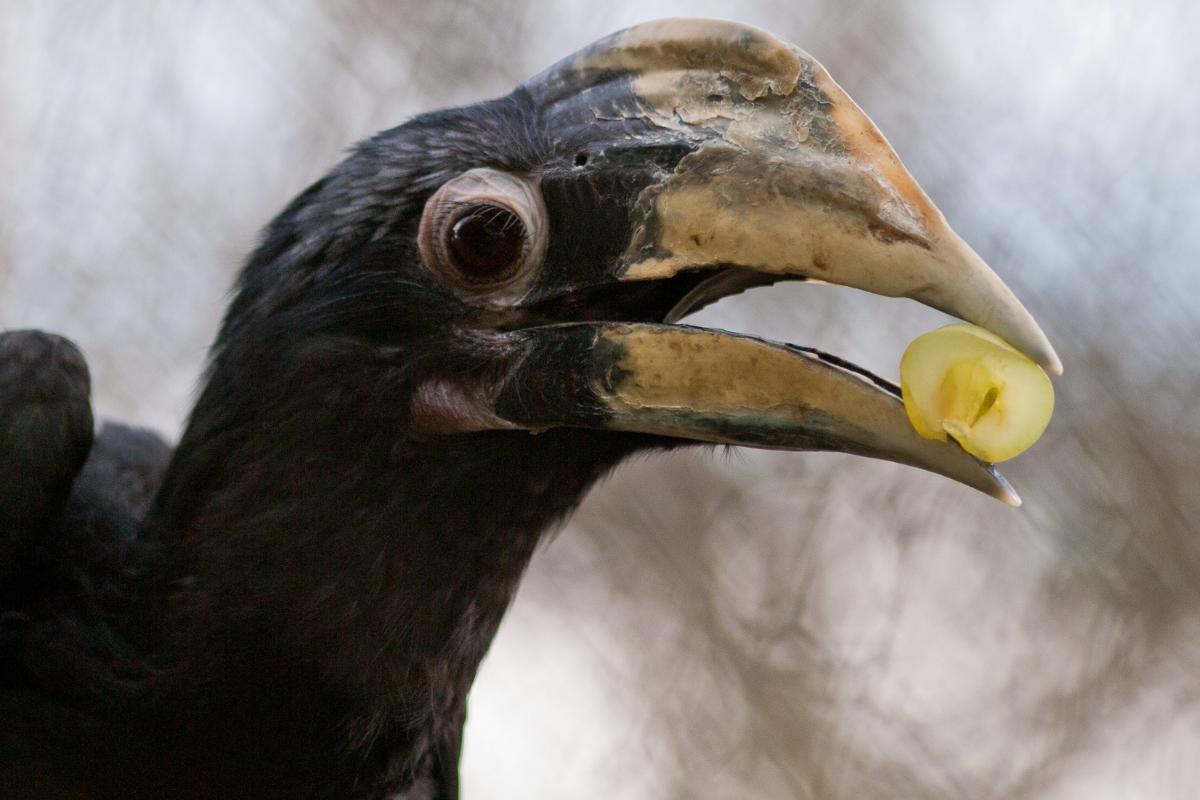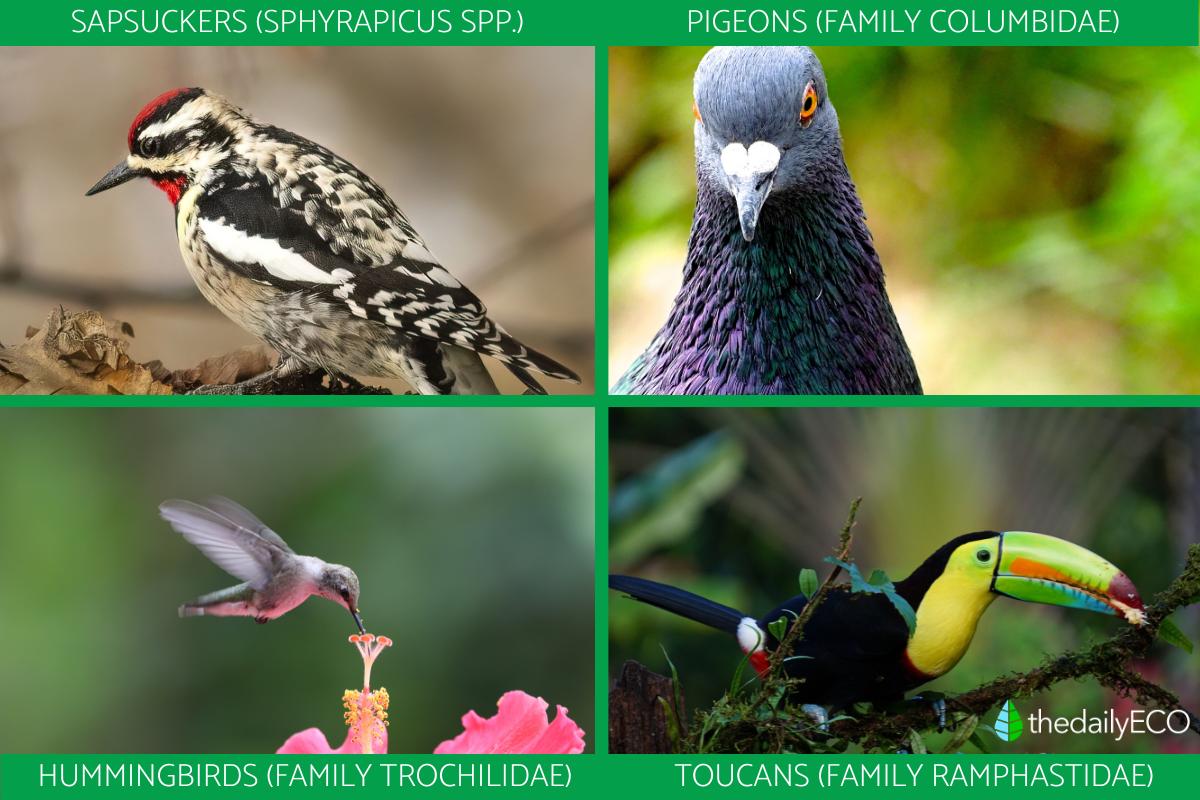What Are Herbivorous Birds? Types and Classification


Herbivorous birds, a diverse group of avian species, have evolved to thrive on a diet primarily composed of plant material. Unlike their carnivorous counterparts, these birds have adapted to extract sustenance from various plant sources, showcasing a fascinating array of dietary preferences and specialized adaptations.
The following article by thedailyECO explains the concept of herbivorous birds, their classification, the various types that exist, and provides illustrative examples.
Characteristics of herbivorous birds
Herbivorous birds are a diverse group of avian species that rely on a plant-based diet, consuming various forms of vegetation, from nectar to grains. These herbivorous birds share several common characteristics that are adapted to their specialized dietary habits:
Specialized beaks
One of the primary features that distinguish herbivorous birds is their beak structure. Birds lack teeth, so their beaks have evolved to be highly specialized for processing plant material. The shape and size of the beak can vary widely among different herbivorous species, allowing them to efficiently access and consume their preferred plant foods. For example, finches have adapted beaks for cracking seeds, while hummingbirds have long, slender beaks for sipping nectar.
Specialized gut microbiota
Herbivorous birds often host specialized gut microbiota that help break down complex plant materials, aiding in digestion. These microbial communities can vary depending on the bird's diet.
Fast digestion
Birds, in general, have relatively short intestines compared to many other animals. This anatomical adaptation results in faster digestion. Herbivorous birds benefit from this rapid digestion as it helps them extract nutrients from plant material more efficiently.
Small size
Herbivorous birds tend to have smaller body sizes compared to birds of prey or carnivorous birds. This is because they don't need large bodies to overpower or capture prey, as their diet consists of plant material that doesn't require the same physical adaptations.
Migration patterns
Many herbivorous birds are migratory and follow seasonal changes in vegetation. Their migration patterns are often linked to the availability of food resources, particularly in the case of birds that rely on specific plant blooms or fruiting trees.
These adaptations have allowed herbivorous birds to occupy diverse niches and play vital roles in ecosystems as pollinators, seed dispersers, and herbivore regulators.
Types of herbivorous birds
Herbivorous birds showcase a remarkable array of dietary adaptations centered around the specific plant components they consume. This diversity leads to the classification of herbivorous birds based on their primary dietary preferences.
These classifications provide valuable insights into the intricate relationships that exist between these birds and the plant species they depend on. Additionally, they shed light on the essential ecological roles that herbivorous birds fulfill, including seed dispersal, pollination, and contributing to nutrient cycling within ecosystems. Let us take a closer look at each category:
Nectarivores
These birds primarily feed on nectar, the sugary liquid produced by flowers in structures called nectaries. This feeding behavior is often associated with a close and mutually beneficial relationship between the birds and the flowering plants they pollinate. Hummingbirds are well-known nectarivores, using their specialized long, slender beaks to access nectar.
Granivores
Granivorous birds specialize in eating seeds or grains produced by plants like wheat, corn, and other cereal crops. They have adaptations such as a crop (for softening and moistening seeds) and a gizzard (containing small stones for grinding seeds). Some common granivorous birds include sparrows, finches, and pigeons.
Semillivores
Semillivorous birds also consume plant seeds, and their digestive system is similar to granivores. However, the distinction helps avoid confusion between seeds and grains, as semillivores may consume a wider variety of seeds from various plant species.
Frugivores
These herbivorous birds primarily seek out fruits for their diet, including forest berries and other fruits produced by plants. Frugivores play a crucial role in seed dispersal through their feces, aiding plants in colonizing new areas. Examples of frugivorous birds include thrushes and certain species of toucans.
Saviasuckers
This unique group of herbivorous birds feeds on tree sap, a nutrient-rich liquid found in plant tissues that transports essential elements such as minerals, sugars, and water. These birds have specialized adaptations for accessing and feeding on sap.
It's important to note that herbivorous birds often exhibit dietary flexibility and may supplement their primary diet with occasional consumption of insects or other herbivorous foods. This supplementation can depend on resource availability and may vary with the changing seasons.
Have you ever wondered if plants are able to tell if they are being eaten? If so, then you might be interested in delving into this subject in another article we have.

Examples of herbivorous birds
Now that you know their classification, let's take a look at some examples of these herbivorous bird species:
Sapsuckers (Sphyrapicus spp.)
- Sapsuckers are close relatives of woodpeckers and share a similar appearance, including the distinctive red feathers on their heads.
- These birds have the unique ability to peck the bark of trees, primarily to extract sap. While sap makes up a significant part of their diet, they may occasionally supplement it with insects attracted to the sap, as well as fruits and seeds.
- Sapsuckers can sometimes become problematic pests when their activities cause damage to living trees.
Pigeons (Family Columbidae)
- Urbanized pigeons, commonly seen in cities and urban areas, have adapted to a scavenging lifestyle. They often feed on whatever food scraps they can find in trash or on paved ground, making them a common sight in urban environments.
- These city pigeons reproduce year-round due to the continuous availability of food resources, which distinguishes them from non-domestic pigeons.
- In contrast, wild pigeons primarily exhibit a diet that includes seeds and grains like legumes, corn, or barley. They may occasionally diversify their diet with fruits, snails, or slugs.
Hummingbirds (Family Trochilidae)
- Hummingbirds are nectarivorous birds with an elongated, specialized beak perfectly adapted for accessing the nectar found in bell-shaped flowers.
- Inside their elongated beaks, hummingbirds possess equally long tongues that they use to extract floral nectar.
- These diminutive herbivorous birds have incredibly high metabolic rates due to the energy demands of their rapid wingbeats, allowing them to hover in the air—a feat that sets them apart from most other birds.
- To meet their energy requirements, hummingbirds need to feed approximately eight times every hour, underscoring their constant need for nectar.
Toucans (Family Ramphastidae)
- Toucans are frugivorous birds known for their vibrant and distinctive beaks. They primarily feed on a variety of fruits, especially those found in tropical rainforests.
- Their large, colorful bills help them pluck and consume fruits, and they play a vital role in seed dispersal by excreting seeds in their droppings as they move through the forest.
- Many toucan species are known for their social behavior, often found in small flocks. They communicate with each other through a variety of calls and vocalizations.
These examples showcase the diverse ways in which herbivorous birds have adapted to their specific dietary niches, reflecting their distinctive behaviors and ecological roles in various environments.
If you're curious about the classification of birds, you might want to explore another article on our website that delves deeper into this subject.

If you want to read similar articles to What Are Herbivorous Birds? Types and Classification, we recommend you visit our Wild animals category.







